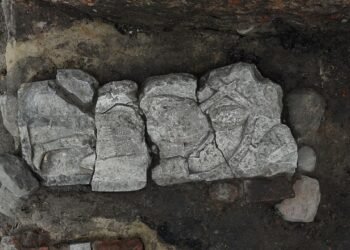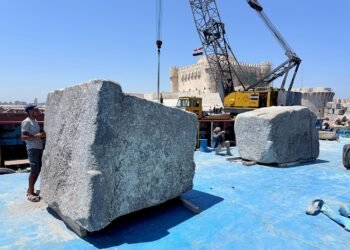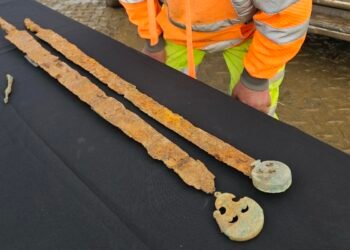In 2019, an extraordinary discovery was made in the ancient town of Carmona, Seville, during routine renovations of a local home. A sunken Roman tomb, untouched for nearly 2,000 years, was unearthed, revealing a treasure trove of archaeological significance.

Among the relics found, a glass urn containing a reddish liquid drew particular attention. This liquid, after thorough archaeochemical analysis, was identified as the oldest wine preserved in its original liquid form, surpassing the previous record held by the Speyer wine bottle from CE 325.
The tomb, part of the western necropolis of Carmo (the ancient name for Carmona), dates back to the early 1st century CE. It contained eight niches, six of which held urns with cremated remains and various funerary objects. The urn in Niche 8 was especially significant. Encased in an oval lead box with a flat-domed lid, it contained approximately five liters of a reddish liquid alongside the cremated bones of a Roman man.
José Rafael Ruiz Arrebola, an organic chemist at the University of Córdoba, led the team that conducted the analysis. The remarkable state of preservation was attributed to the unique environmental conditions of the tomb, which allowed the liquid to remain intact and well-sealed for two millennia.

The analysis involved several advanced techniques. Using inductively coupled plasma mass spectrometry (ICP-MS), scientists determined the chemical elements in the mineral salts of the liquid, identifying common elements in ancient wines such as potassium, calcium, and magnesium. High-performance liquid chromatography coupled with mass spectrometry (HPLC-MS) was employed to identify polyphenols, organic compounds found in grapes and wine. The presence of specific polyphenols, along with the mineral salt profile, confirmed that the liquid was indeed wine.
The wine’s preservation attests to the sophisticated methods used by Roman winemakers to prevent spoilage. Techniques included adding gypsum to extend shelf life, incorporating cooked musts to increase sugar and alcohol content, and using sodium chloride as a preservative and flavor enhancer. These methods are reflected in the fine wines currently produced in regions like Jerez, which are considered similar to those from ancient Roman Baetica.

Romans often built prominent funerary monuments to ensure the deceased remained in public memory. The urns found in Carmona, made from materials such as limestone, sandstone, and glass, each contained the cremated remains of individuals along with personal artifacts. Two urns bore the names Hispanae and Senicio.
The use of wine in Roman funerary practices is well-documented. It played a vital role in rituals intended to aid the deceased in their journey to the afterlife. Researchers hypothesize that the urn in Niche 8 was filled with wine during a libation ritual or as part of the burial ceremony. “The wine, along with other items like a gold ring and remnants of a funeral bed, formed a funerary trousseau meant to accompany the deceased,” explained Ruiz Arrebola.

Before this discovery, the oldest known wine preserved in liquid form was the Speyer wine bottle, found in a Roman tomb near the German city of Speyer in 1867 and dated to approximately CE 325. While the Speyer bottle had long been considered the oldest preserved wine, it lacked chemical analysis to confirm its content definitively.
In contrast, the Carmona discovery has undergone extensive chemical examination, confirming its identity as wine. The findings have been published in the Journal of Archaeological Science: Reports, marking a significant advancement in our understanding of ancient Roman winemaking and funerary customs.























